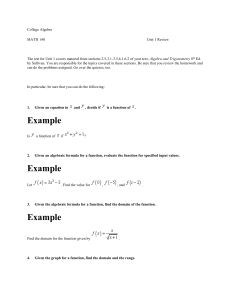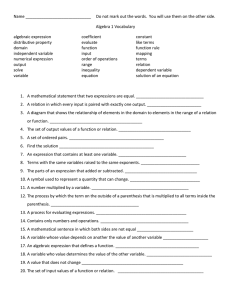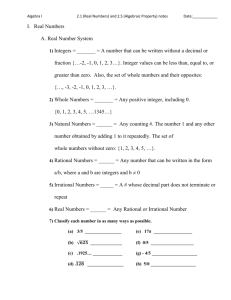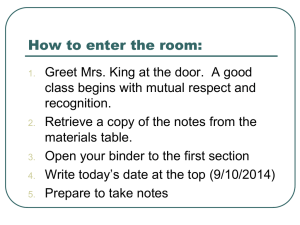DYNAMIC MODELS OF LINEAR FUNCTIONS
advertisement
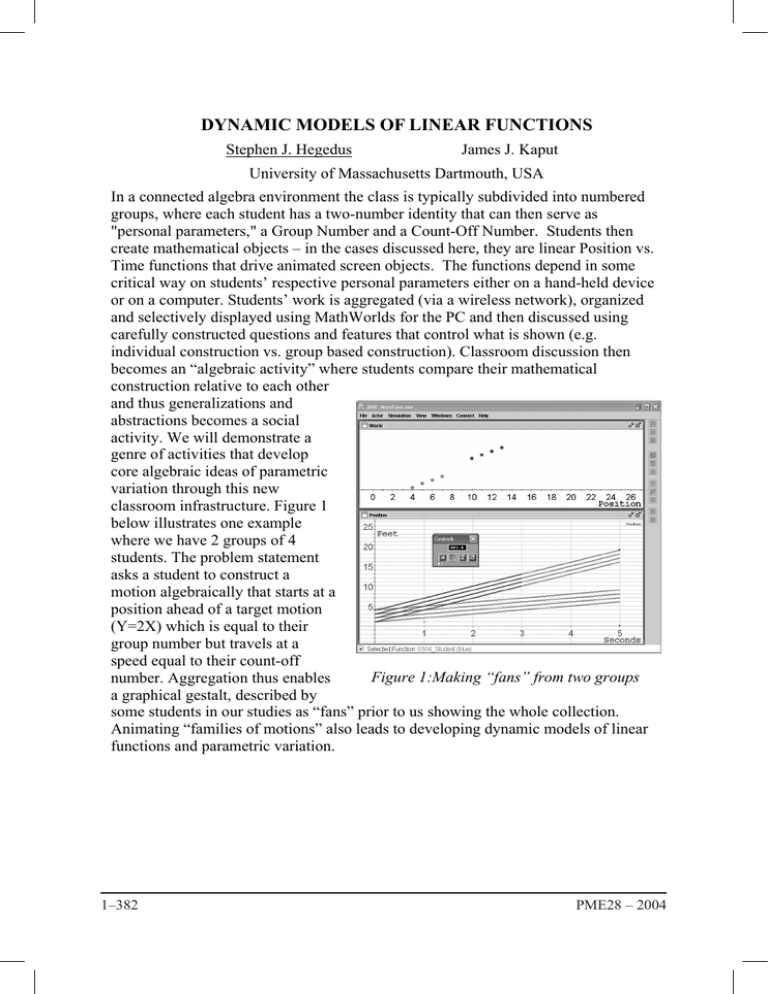
DYNAMIC MODELS OF LINEAR FUNCTIONS Stephen J. Hegedus James J. Kaput University of Massachusetts Dartmouth, USA In a connected algebra environment the class is typically subdivided into numbered groups, where each student has a two-number identity that can then serve as "personal parameters," a Group Number and a Count-Off Number. Students then create mathematical objects – in the cases discussed here, they are linear Position vs. Time functions that drive animated screen objects. The functions depend in some critical way on students’ respective personal parameters either on a hand-held device or on a computer. Students’ work is aggregated (via a wireless network), organized and selectively displayed using MathWorlds for the PC and then discussed using carefully constructed questions and features that control what is shown (e.g. individual construction vs. group based construction). Classroom discussion then becomes an “algebraic activity” where students compare their mathematical construction relative to each other and thus generalizations and abstractions becomes a social activity. We will demonstrate a genre of activities that develop core algebraic ideas of parametric variation through this new classroom infrastructure. Figure 1 below illustrates one example where we have 2 groups of 4 students. The problem statement asks a student to construct a motion algebraically that starts at a position ahead of a target motion (Y=2X) which is equal to their group number but travels at a speed equal to their count-off Figure 1:Making “fans” from two groups number. Aggregation thus enables a graphical gestalt, described by some students in our studies as “fans” prior to us showing the whole collection. Animating “families of motions” also leads to developing dynamic models of linear functions and parametric variation. 1–382 PME28 – 2004
